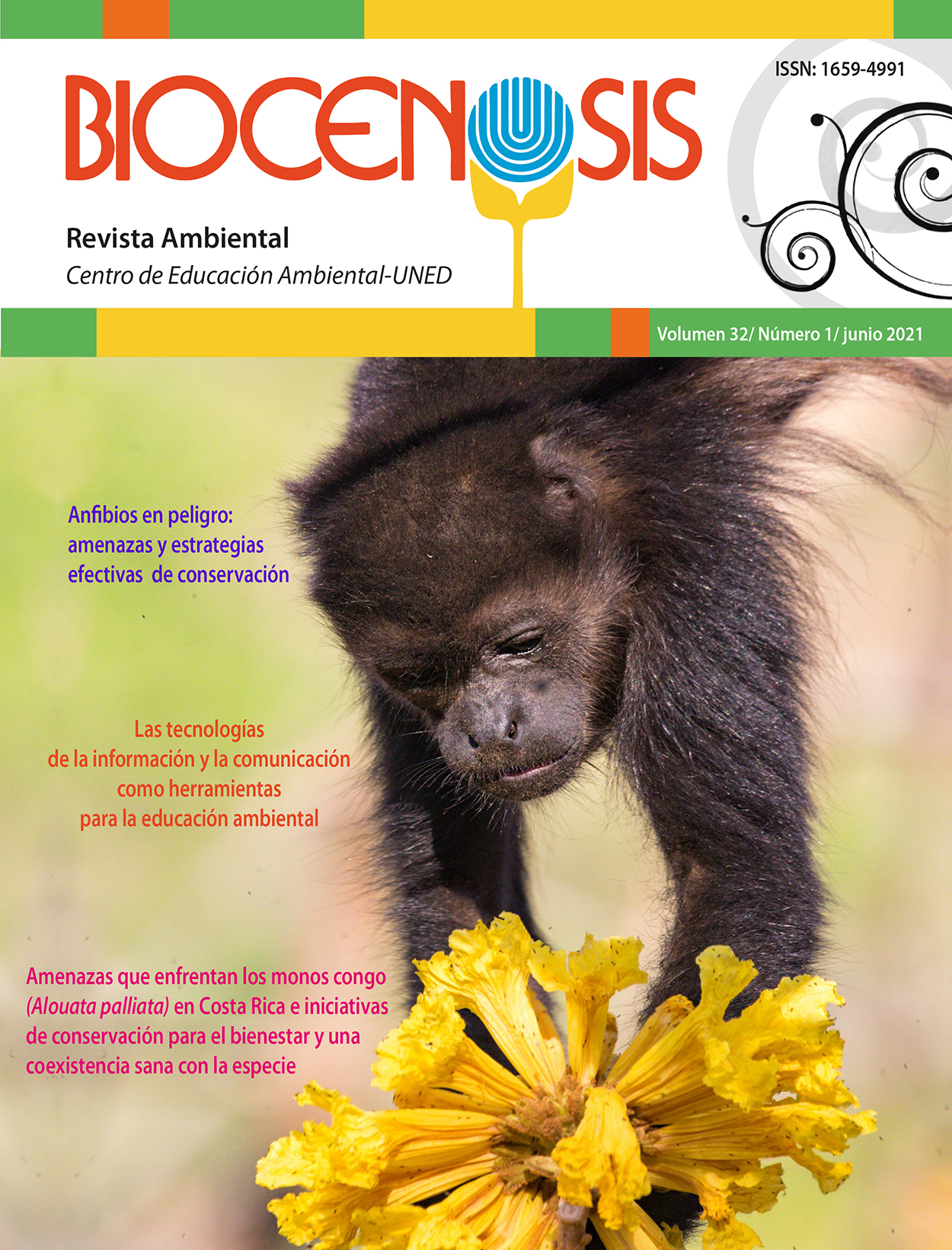Threats faced by howler monkeys (Alouatta palliata) in Costa Rica and conservation initiatives for their well-being and our healthy coexistence with the species
DOI:
https://doi.org/10.22458/rb.v32i1.3522Keywords:
Allouatta paliatta, mantled howler monkey, habitat loss, forest fragmentation, electrocution, coexistenceAbstract
The conservation status of the mantled howler monkey (Alouatta palliata), one of the four primate species in Costa Rica, is that of an endangered species. The main threats faced by howler monkeys are habitat loss and forest fragmentation, which expose monkey populations to problems related to isolation, loss of landscape connectivity, and an anthropogenically-modified environment. The following paper pinpoints the relevance of addressing the problems howler monkeys experience in order to ensure their well-being through coordinated inter-institutional work, the application of Costa Rica´s robust legislation, and the existing ecological knowledge in the country about the species.
Published
How to Cite
Issue
Section
License
Copyright (c) 2021 Biocenosis

This work is licensed under a Creative Commons Attribution-NonCommercial 4.0 International License.
